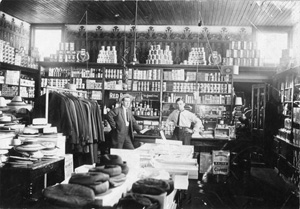

Town, pop 2,348, is located SE of Melville at the junction of Hwys 22 and 80. The town was named for Count Paul Oscar Esterhazy, who settled the first 35 Hungarian families in the area, establishing what came to be known as the Kaposvar Colony. Other settlers to the area included English, Scandinavian, and German immigrants. After initial hardships, the settlement flourished and its success helped publicize the agricultural viability of the region to later waves of immigrants. The development of the potash industry in the late 1950s and early 1960s had a dramatic impact on Esterhazy’s progress. International Minerals and Chemicals Corp. (IMC) began construction of the world’s largest potash mine, K1, which became fully operational in 1962; a second mine, K2, was finished in 1967. The workforce required at these huge enterprises had a drastic effect on Esterhazy’s population: by 1966, it had reached 3,190. No longer just a farming community, Esterhazy had become one of the bigger and more modern rural communities in Saskatchewan, with all the facilities and amenities of a larger urban centre.
Today, the area potash mines employ approximately 800 people; but agriculture remains important to the economy, with district farms growing wheat, canola and flax, and raising cattle. Just south of the town is the Kaposvar Historic Site, featuring the Our Lady of Assumption Roman Catholic Church, built in 1906–07, which was constructed of large stones hauled to the site by the early Hungarian pioneers and is the location of a traditional annual pilgrimage.
David McLennan